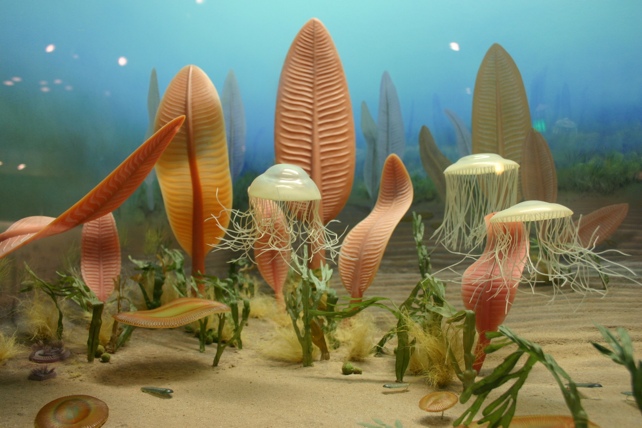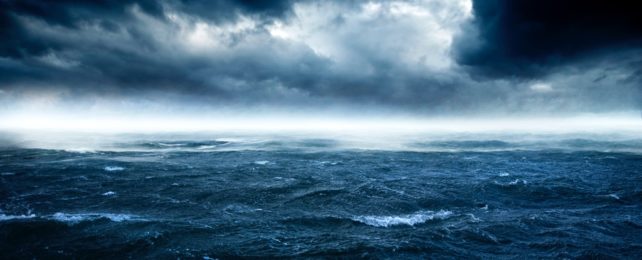Since the Cambrian explosion 538.8 million years ago – a time when many of the animal phyla we're familiar with today were established – five major mass extinction events have whittled down the biodiversity of all creatures great and small.
Last year, researchers from the US published evidence of one occurring earlier, around 550 million years ago during a period known as the Ediacaran.
Though the oceans teemed with a few familiar animals like sponges and jellyfish, most life during this early period of biological history would seem alien to us now. Many of the animals were soft-bodied. Some looked more like plant fronds stuck in place. Others had some form of shell.
Virginia Tech paleobiologist Scott Evans and colleagues compiled data on rare fossils of the squishier kinds of animals from around the world dated to the Ediacaran. They found sudden shifts in biodiversity that had previously been detected weren't mere sampling biases.

Because softer body parts typically don't fossilize as readily as harder, more mineralized bits of anatomy, researchers have typically suspected a relative absence of soft-bodied animals in the Ediacaran's later stages are simply the result of a failure to be preserved.
But the global fossil record indicates otherwise.
The team found that there was an overall increase in biodiversity between the earlier and middle stages of the Ediacaran, known as the Avalon (575 to 560 million years ago) and White Sea stages (560 to 550 million years ago).
"We find significant differences in the feeding mode, life habit, ecological tier, and maximum body size between the Avalon and White Sea assemblages," the team wrote in their paper.
Between these two time periods, more smaller mobile animals appeared that fed on the microbial mats that dominated the seafloors. Previously many of the animals were stuck-in-place (sessile) filter feeders.
Feeding modes did not change in this way between the White Sea and the last stage, known as the Nama (550 to 539 million years ago). Rather, a staggering 80 percent of species seemed to vanish between these two stages of the Ediacaran.
Past research has suggested that this decline may have been the result of mobile animals that burrowed or left trace fossils, which profoundly altered the environment and slowly replaced sessile filter feeders. This more recent evidence suggests that was not the case.
All types of feeding modes and life habits experienced similar losses, with only 14 genera still seen in the Nama out of 70 known groups from the earlier White Sea stage. If more newly evolved species had taken over, there also would have been temporal overlap between the new and the old species. This wasn't observed, the team argued, ruling out biotic replacement.
"The decline in diversity between these assemblages is indicative of an extinction event, with the percentage of genera lost comparable to that experienced by marine invertebrates during the 'Big 5' mass extinctions," Evans and colleagues wrote.
Many of the White Sea animals that survived the extinction event and remained in the Nama period were large, frond-like organisms with a high surface area to volume ratio. This could be a sign these animals were adapting to deal with a reduction in oceanic oxygen.
"By maximizing the relative proportions of cells in direct contact with seawater, high surface-area taxa would have been comparatively better adapted to survive in low-oxygen environments," the team explained.
There is also recent geochemical evidence to support this idea, with a 2018 study finding signs of extensive ocean anoxia that covered more than 20 percent of the seafloor at the end of the Ediacaran.
"Thus, our data support a link between Ediacaran biotic turnover and environmental change, similar to other major mass extinctions in the geologic record," the team concluded.
It's become an all too familiar story.
This research was published in PNAS.
A version of this article was first published in November 2022.
